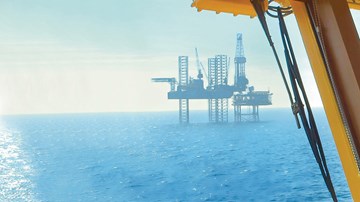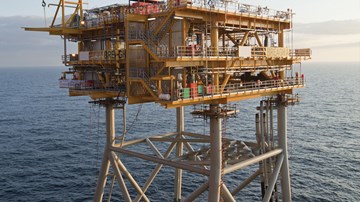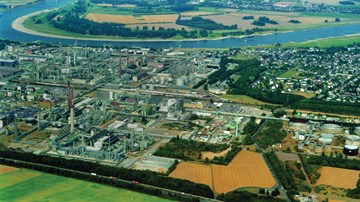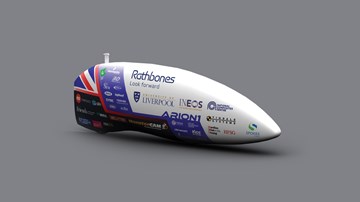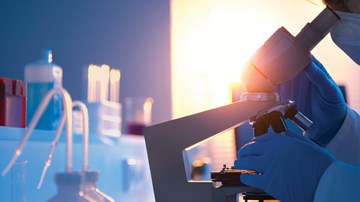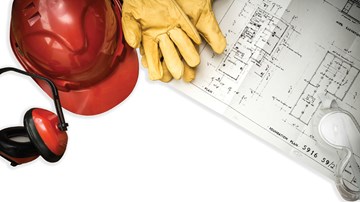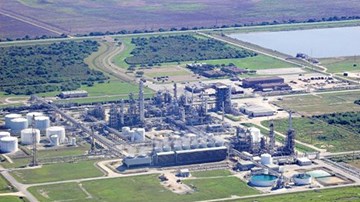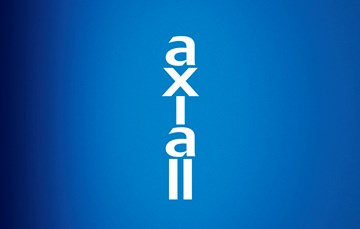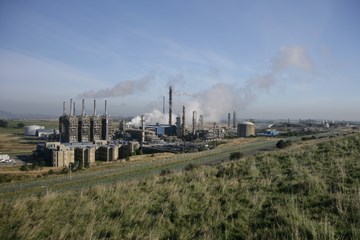The acquisition of gas fields in the North Sea marks a significant moment in INEOS’ history. But it is not the first time INEOS has seemingly achieved the impossible. Ten years ago it raised a cool $9 billion to buy BP’s massive chemicals business INNOVENE. It was a transformational deal that changed the face of INEOS overnight.
THE year was 2005.
The world feared it was on the verge of a bird flu pandemic as cases spread from Asia to Europe, millions mourned the death of Pope John Paul II and Saddam Hussein went on trial.
INEOS was doing well. It was turning over $8 billion a year and employed 7,500 people at 20 sites around the world.
But INEOS Capital had bigger ambitions, it was looking to invest.
BP was planning to float its massive chemicals business, INNOVENE, on the New York Stock Market. But INEOS convinced the management team to sell the olefins and derivatives and refining subsidiary to it instead for $9 billion.
It was a colossal bet and a deal was agreed without even visiting many of the sites.
But that bold step propelled INEOS into the big league of global petrochemical companies.
INNOVENE had 8,000 staff and 26 manufacturing sites in America, Canada, the UK, France, Belgium, Germany and Italy.
“The deal vaulted INEOS, which then had an exceptionally low profile, into the top tier of global chemical companies,” said Patricia Short, a journalist at Chemical & Engineering News.
Following the acquisition the combined businesses had a turnover of more than $30 billion, making INEOS the world’s fourth largest petrochemicals company.
Jim Ratcliffe described the deal – BP’s biggest-ever divestment – as a ‘transformational acquisition.’
Overnight his company had more than doubled in size.
The acquisition, which included the Lavéra and Grangemouth refineries, filled out INEOS’ ethylene and propylene derivative portfolio.
David Anderson, President of the Chemical Market Resources Inc, a Houston-based consulting firm, remembers the deal well.
“This was a little company taking on the big guys,” he said. “It was the guppy swallowing the whale. No one thought it might not work out. But it was whether or not the INEOS team could assimilate all the parts into a cohesive operating entity.”
It could have gone horribly wrong. But it didn’t.
INEOS after all had become accustomed to snapping up unwanted commodity businesses from the likes of ICI, BASF as well as BP, as these chemical giants restructured their own businesses. If any company on the planet could do it, it was INEOS. All INEOS asked itself was whether it could double the earnings (EBITDA) of the businesses it acquired over five years.
That wasn’t quite the view from those working for INNOVENE at the time.
Bob Sokol, now Chief Financial Officer of C2 Derivatives, had heard about INEOS but viewed it as a small European-focused chemical company.
“I never thought of it as a company which could pull off a $9 billion INNOVENE acquisition,” he said.
He said staff at INNOVENE were aware that changes were coming.
“Employees were operating in a cloud of uncertainty but that uncertainty shifted from going public to being acquired by a largely unknown chemical company on the back of 100% debt finance” he said.
Dennis Seith, now Chief Executive Officer of INEOS O&P USA, had been part of the management team selected by BP to establish INNOVENE.
“I had never heard of INEOS and it definitely was not a household name to most in the US and INNOVENE,” he said.
But he said the enormous pace of change following the acquisition left little time for employees to worry that a little company had just acquired a giant in the chemical world.
“The fear of the unknown is always a bit unsettling, but we had a job to do and the work was so intense there was not a lot of time to stress about what was happening,” he said. “I just remember it being both exhilarating and unnerving. We had a chance to remove bureaucracy, try out ideas, be entrepreneurial and take on accountability for the success or failure in the business.”
With the deal, INEOS inherited an executive team of 12. Within a year only one of them was left.
“That was me,” said Dennis. “There were very few layers left in the business and responsibility was thrust upon those willing to take it. Many were not comfortable with the downsizing and reduction of overheads or approach to entrepreneurial accountability in a private sector company.”
BP had grown into a very slow-moving, bureaucratic organisation obsessed with multiple peer reviews it became plagued by indecisiveness.
Under INEOS, delegations were tightened and decisions taken at all levels. Corporate spending was reined back. Capital spending was much more tightly controlled. Staff were asked to cut costs by at least 25%. Management began to instil a new culture where employees were asked to ‘act like owners’ in the business where costs and decisions mattered to its future.
“We became truly focused and developed the vision that we still have for the business today,” said Dennis.
He believed – and still believes – that the takeover was the best thing that ever happened.
“BP chemicals was a good business but it had clearly had lost its way with a heavily matrixed operation,” he said. “INEOS gave us the opportunity to truly lead a business and work with very talented people towards common goals. Every employee’s effort matters and makes a difference. We have only been limited by our own creativity and how we choose to prioritise our resources.”
Joe Walton, now Business Director of INEOS Oligomers, also worked at BP INNOVENE.
“A number of my BP colleagues were very worried about leaving the perceived stability of a major company like BP for a leveraged company like INEOS,” he said. “However, if you look back 10 years at the history of INEOS versus BP that was a misguided view.”
At BP, Joe had been responsible for the global business optimisation of the LAO and PAO business only.
After the takeover, his remit increased and he was given global responsibility for the Oligomers business management, sales and technology.
“A lot of my customers wanted to know what it was like to work for INEOS instead of BP,” he said. “I used to tell them that as a business manager in BP, I spent 60% of my time managing my business and 40% answering questions from central functioning groups that did not add value. In INEOS I spend more than 90% of my time actively managing the business.”
Just weeks after the takeover, INEOS created seven new businesses covering refining, olefins, polyolefins, olefins and polymers in the US, nitriles, technologies and oligomers.
INNOVENE no longer existed. It was now INEOS Nitriles, INEOS Olefins and INEOS Polyolefins in Europe, INEOS Olefins & Polymers USA, INEOS Oligomers, INEOS Refining and INEOS Technologies each with their own focused team.
That same year Jim was named Britain’s top entrepreneur by Management Today, ahead of Carphone Warehouse’s Charles Dunstone and Simon Nixon, founder of Moneysupermarket.com.
The business publication described Ratcliffe as ‘the chemical industry’s answer to steel magnate Lakshmi Mittal’.
In the first 10 years, INEOS made more than 20 acquisitions.
But the INNOVENE deal will always be the one that changed the face of INEOS forever.
Looking to the future, though, you cannot help but feel that the acquisition of gas fields in the North Sea could very well have a very similar effect.
